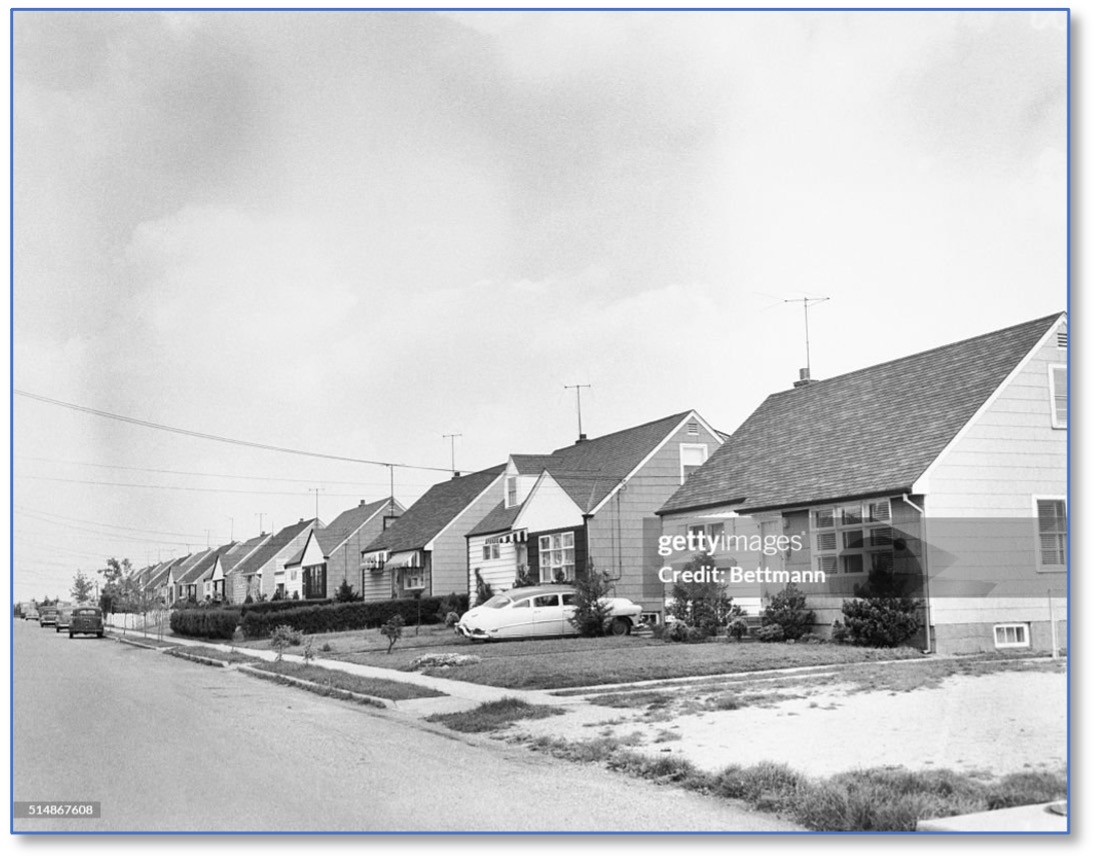- Home
- Social Studies
- American-dream History Lesson Plan & Fill-in Worksheet
The American Dream

When people talk about the “American dream,” they probably refer to an idealized version of life in the 1950s. It was during that period of post-World War II prosperity that many enjoyed material comfort and a measure of calm and optimism.

The decade began with a nation of 150 million people who built 13 million new homes and drove large cars decorated with chrome. They bought 4 million new television sets to watch game shows such as “Beat the Clock” and domestic comedies like “The Adventures of Ozzie and Harriette.”
It was also the decade during which President Dwight D. Eisenhower and Vice President Richard M. Nixon were elected; Elvis Presley and Buddy Holly created near-riots when they performed their songs; beat generation author Jack Kerouac wrote On the Road describing bohemian life; men wore Bermuda shorts; the computer was introduced to the marketplace; and commercial jet planes first began regular service.
School Integration
Black Americans, however, were still largely excluded from a share of the prosperity. Yet, in that decade, in 1954, the U.S. Supreme Court case, Brown v. Board of Education, ruled unanimously that racial segregation in public schools is unconstitutional. Although the Jim Crow laws (state and local laws that enforced racial segregation) remained in force until 1965, the 1954 Supreme Court decision leading to school integration forecast a somewhat brighter future.
The Korean War
The Korean War was fought between North Korea and South Korea from 1950 to 1953. The war began on 25 June 1950 when North Korea invaded South Korea. The war ceased with an armistice in July, 1953. North Korea was supported by China and the Soviet Union while South Korea was supported by the USA and the United Nations (UN). In this war 36,000 American soldiers lost their lives.
McCarthyism
Communists were perceived by some Americans as a threat in the Cold War era following World War II. Playing on the fear of the “Red Menace,” Wisconsin Senator Joseph McCarthy claimed the government, as well as numerous industries, were filled with large numbers of Communist sympathizers. He and the House Un-American Activities Committee (HUAC) investigated hundreds, and although few charges ever stuck, many lost their jobs anyway. He brought ruin to many innocent people. McCarthy extended his allegations to the army itself, and in a series of nationally televised hearings, he finally showed himself to be the true menace and was later stripped of power. His discredited efforts were to become known as “McCarthyism.”
The 1950s was a time of transition to the very different and controversial decade of the 1960s.
Questions ~
- Describe the USA’s position in the world relative to other countries’ economies and military power in the 1950s.
- While Americans built houses and bought cars, where could be found tumult and violence outside the 48 contiguous states?
- How much has the population of the USA increased since the 1950s?
- What is the current total population of the world?
More ...
- Write a paragraph about how the US manufacturing base allowed Americans to develop lives of comfort and convenience. What did Americans buy? Who benefitted?
Cuando se habla del "sueño americano," se alude generalmente a una versión idealizada de la vida de los años 50. Fue durante ese periodo de prosperidad de posguerra que muchísimas personas gozaron de confort material y de cierto grado de paz y optimismo.
Okay, so now I've put on some ads from Amazon - from which I may earn a few cents. (2025)



